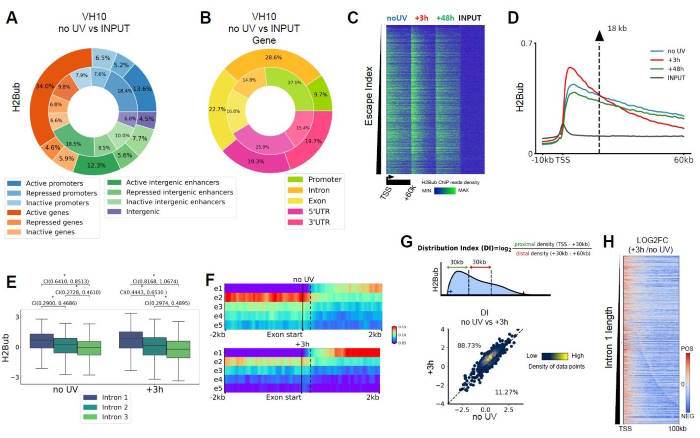A new study by Fanourgakis, Synacheri et al., (Fousteri lab) identifies the emerging role of histone H2Bub in the dynamic shaping of transcription elongation-dependent epigenome, especially in response to genotoxic stress.

The study, which was led by Maria Fousteri and Dimitris Konstantopoulos, provides high-resolution details on the spatiotemporal distribution of histone H2B ubiquitin (H2Bub) to gene architecture and reveals functions of H2Bub essential to transcription elongation rate regulation.
Genome-wide maps established in response to transcriptional inhibition and genotoxic stress as well as in ATXN7L3 knock-down cells impaired for H2Bub de-ubiquitination activity show that H2Bub levels and patterns depend on intron-exon architecture both in steady state transcription and in response to genotoxic stress. Through the implementation of a high-resolution computational framework, the data of this study demonstrate that H2Bub pattern follows that of RNA Polymerase II, both in the ATXNL3 knockdown cells and in response to UV irradiation guaranteeing faithful elongation speed, in particular in the context of the transcription-driven DNA damage response.
Smaragda Fanourgakis, Anna-Chloe Synacheri, Matthieu D. Lavigne, Dimitris Konstantopoulos, Maria Fousteri (2023). Histone H2Bub dynamics in the 5' region of active genes are tightly linked to the UV-induced transcriptional response. Computational and Structural Biotechnology Journal (2023), 21: 614-629. doi.org/10.1016/j.csbj.2022.12.013
https://www.sciencedirect.com/science/article/pii/S2001037022005712